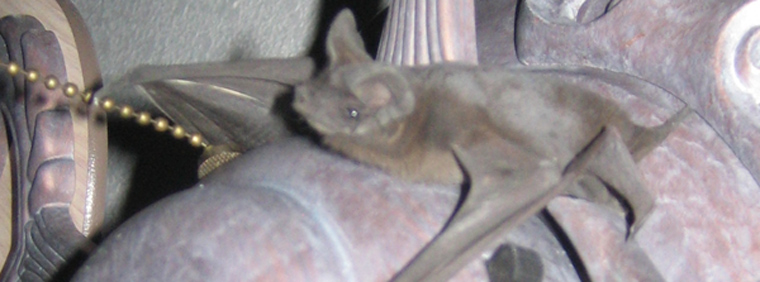-
info@aaanimalcontrol.com
Call us for help in your town
Humane Wildlife Education
Where Can We Find The Bat's Natural Habitat
Need bat removal in your hometown? We service over 500 USA locations! Click here to hire us in your town and check prices - updated for year 2020.
Accounting for about 25% of the total number of mammal species, approximately 1000 different species of bats exist on our planet. And this means that the bat's natural habitat is everywhere in the world, with a few exceptions such as the Antarctic, the Arctic, and a couple of remote oceanic islands.

What they do need to have is a place where they can congregate during the day, or where they can hibernate. For those species that live in temperate climates, a rather warm place to roost is required. Apart from the roosting aspect, bats will also need areas where they can forage and hunt. As you can see, there's little a bat needs in order to make a place its home.
Learn more: Do bats hibernate?
Bat roosts are typically located in hollows, foliage, caves or other rock crevices, and in man-made structures such as tunnels, under bridges, in barns, in bat houses, in abandoned buildings, as well as in chimneys or attics.
Bats in the United States will often roost in attics or chimneys even if humans are living in the building, and while these little mammals are priceless to our ecosystem, you definitely don't want their guano filling your chimney or attic.
Learn more: Do bats migrate?
Different habitats have allowed for diverse species to evolve, bats living a prosper existence in almost all of earth's habitats. They're very special and interesting mammals that have intrigued humankind since its early beginnings, and that continue to intrigue to this day, as new findings regarding their biology, behavior, and diversity keep emerging with new studies being developed and in progress as we speak. Bats have not only helped us come up with radar and sonar technologies, but they tirelessly ensure the health of our ecosystems by controlling insect populations, pollinizing different plants and fruits, and dispersing seeds.
Learn more: Bat urine removal and urine stain removal
Be sure to consult with a wildlife control professional if you're having bat problems in your home, because bat removal is pretty tricky, not to mention that it's considered a specialty service – and for good reason. If you're dealing with a bat colony during the months
of spring or summer, you're most definitely facing a bat maternity colony, and it's probably illegal in your state to exclude bats during maternity season. More information about bats is available on this website, and I invite you to read it all. And if you're looking for
professional wildlife removers, you can check my directory – it's not only current and verified, but it contains professionals who I've discussed with, and even people who I've personally trained during the years I've been working in this field.
For more information, you may want to click on one of these guides that I wrote:
How much does bat removal cost? - get the lowdown on prices.
How to get rid of bats - my main bat removal info guide.
Example bat removal photographs - get do-it-yourself ideas.
Bat job blog - learn from great examples of bat jobs I've done.


















